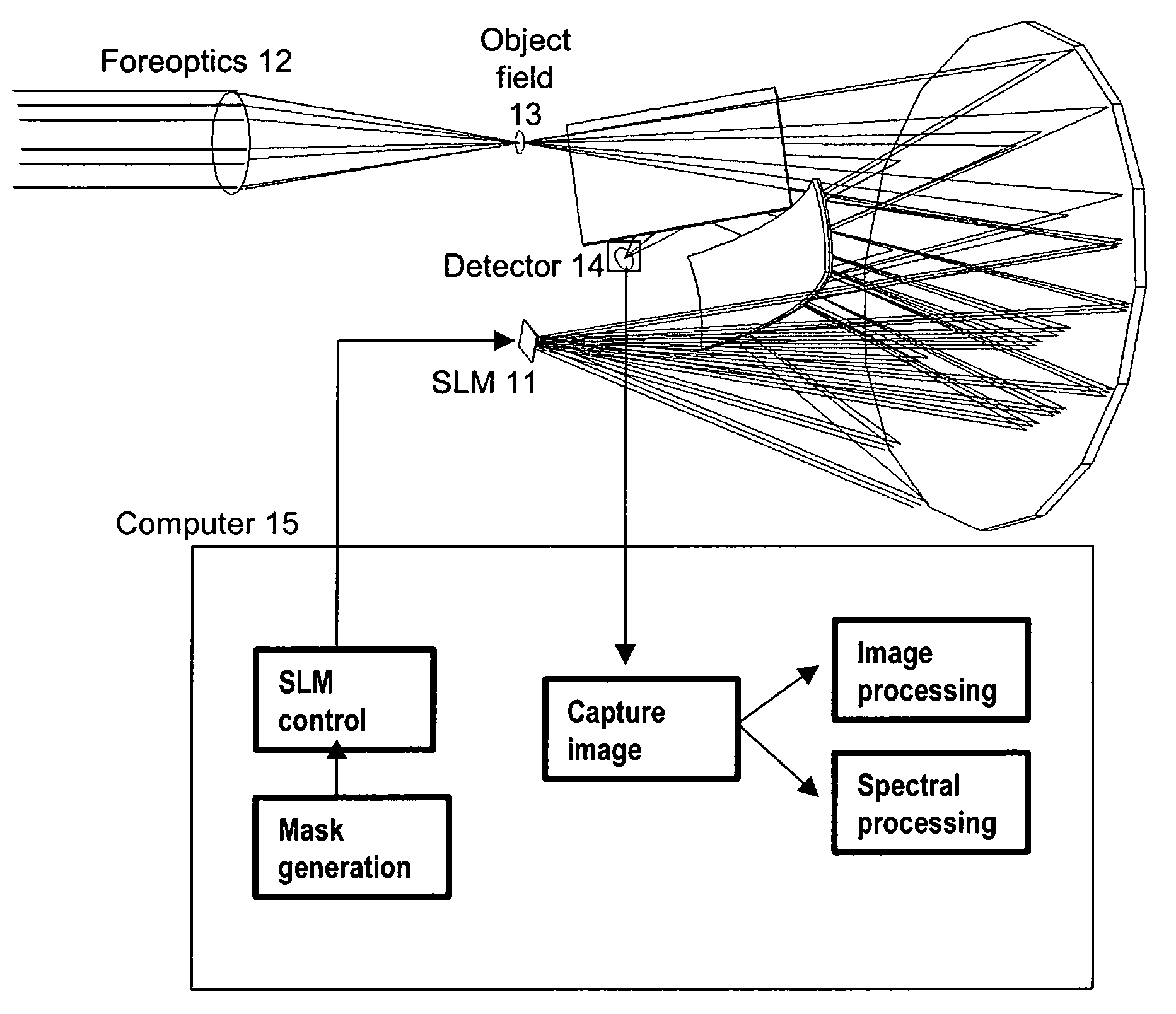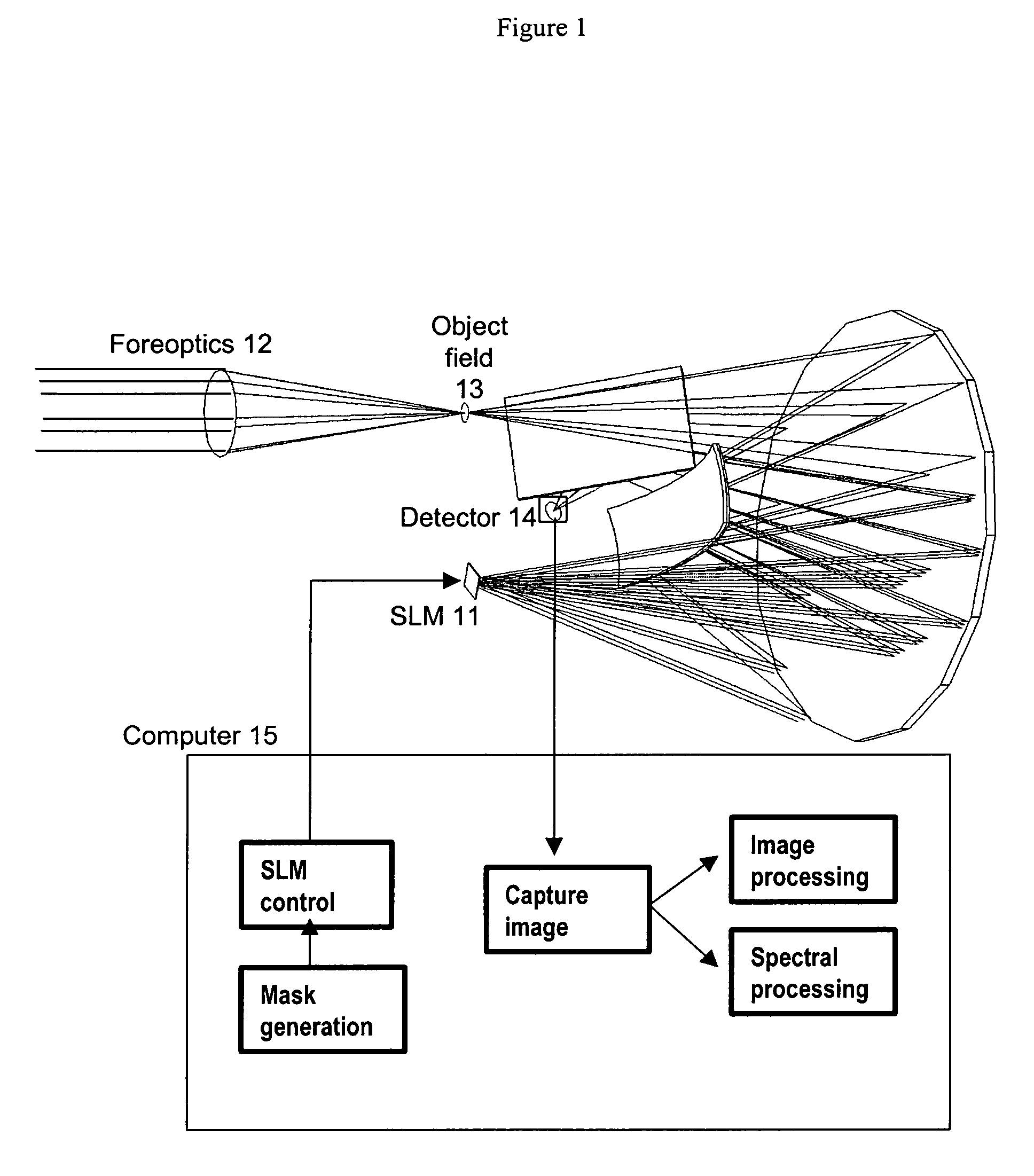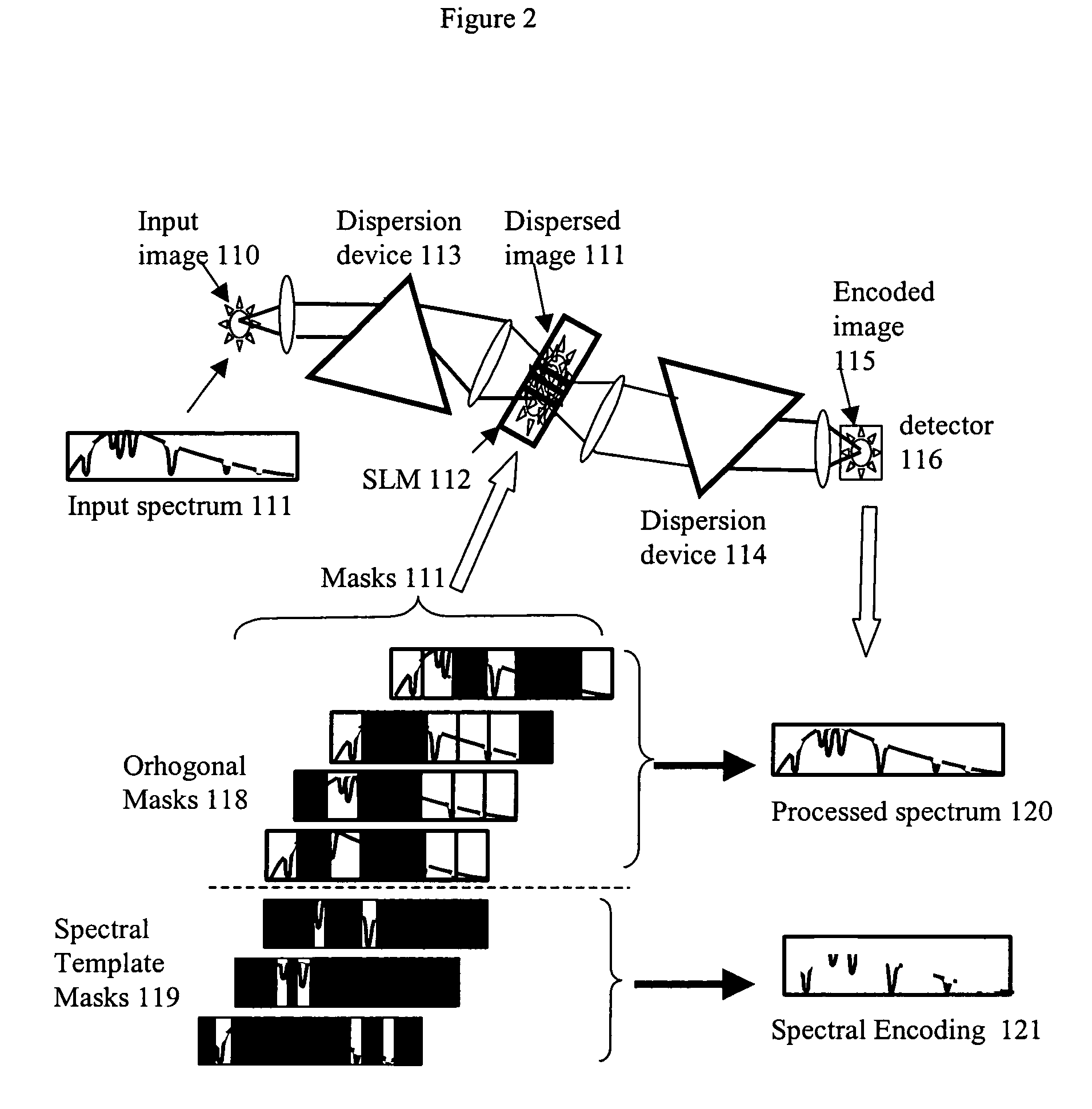Spectral encoder
a spectral encoder and encoder technology, applied in the field of spectral encoders, can solve the problems of difficult two-dimensional imaging approaches and poor image quality, and achieve the effects of reducing image aberration, improving overall image quality, and high-quality two-dimensional images
- Summary
- Abstract
- Description
- Claims
- Application Information
AI Technical Summary
Benefits of technology
Problems solved by technology
Method used
Image
Examples
Embodiment Construction
[0038]The preferred embodiment of the spectral encoder of this invention consists of a double-pass spectrograph with an intermediate encoding mask, and a detector. External means, such as foreoptics or optical fibers, are used to introduce a radiation field to the object plane of the spectrograph. The spectral encoder produces a spectrally encoded image of the object field on the detector. Using telescope foreoptics, the imager might investigate a distant scene, or using microscope foreoptics it might investigate a microscopic scene. Alternatively, using optical fibers it might measure radiation from multiple distant locations.
[0039]FIG. 1 shows one embodiment of a spectral encoder of the invention incorporating a programmable spatial light modulator (SLM) 11 that allows programmable and adaptive selection of the spectral pass bands. It incorporates a telescope foreoptic 12 to deliver an image into its input object field 13. It also uses one or more 2D detector arrays 14 to convert ...
PUM
 Login to View More
Login to View More Abstract
Description
Claims
Application Information
 Login to View More
Login to View More - R&D
- Intellectual Property
- Life Sciences
- Materials
- Tech Scout
- Unparalleled Data Quality
- Higher Quality Content
- 60% Fewer Hallucinations
Browse by: Latest US Patents, China's latest patents, Technical Efficacy Thesaurus, Application Domain, Technology Topic, Popular Technical Reports.
© 2025 PatSnap. All rights reserved.Legal|Privacy policy|Modern Slavery Act Transparency Statement|Sitemap|About US| Contact US: help@patsnap.com



